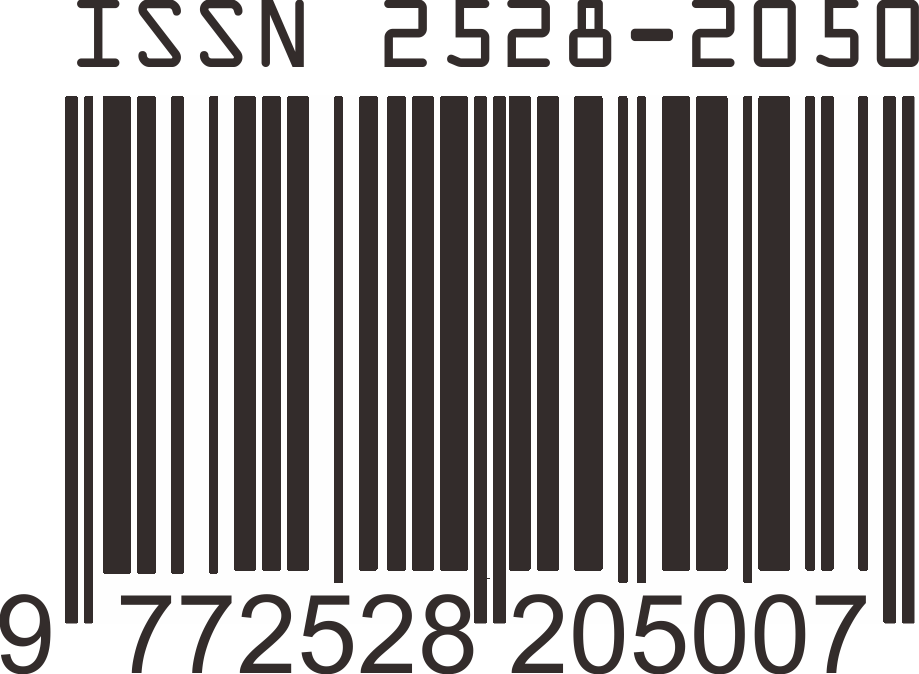Keragaman Isolat Khamir Osmofilik pada Madu Hutan dari Sulawesi Tengah Ditinjau Menggunakan Teknik RAPD
Abstrak
Honey is a sweet substance with high sugar content produced by bees from flower nectar. Osmophilic yeast is one of organisms that can grow in honey because their ability to adapt in high osmotic pressure environment. Twenty-seven osmophilic yeast isolates were obtained from 11 forest honey samples to this research. This research objective is to determine the diversity of yeast isolates from genotypic characterization. Genotypic characterization was done using DNA fingerprint analysis using the RAPD PCR technique. This research used 2 types of primers, namely CDU primer (5′-GCGATCCCCA-3 ′) and M13 primer (5′-GAGGGTGGCGGTTCT GAGGGTGGCGGTTCT-3 ′). Data in the form of electrophoregram are represented in table n (yeast strain) x t (character units) using binary scoring type. The data were analyzed using a numerical taxonomy method with similarity (OTU) and determined using Jaccard coefficient (SJ) in 70% of IS limit. The results of this research showed that 27 yeast isolates were divided into 2 clusters and 10 outliers with a correlation coefficient (r) of 0.924624
Kata Kunci
Teks Lengkap:
PDFReferensi
Bryant, V.M., 2001. Pollen Content of Honey. CAP Newsletter, 24(1), pp.10 - 24.
Fadda, M.E., Viale, S., Deplano, M., Pisano, M.B., and Cosentino, S., 2010. Characterization of Yeast Population and Molecular Fingerprinting of Candidazeylanoides Isolated from Goat's Milk Collected in Sardinia. International Journal of Food Microbiology, 136, pp.376 – 380.
Fifendy, M., 2017. Mikrobiologi. Depok: Kencana. p.65 - 66.
Haryono, S. J., Anwar, S. L., dan Salim, A., 2018. Dasar-Dasar Biologi Molekuler Kanker Bagi Praktis Klinis. Yogyakarta: Gadjah Mada University Press. pp.45 - 46.
Khumari, N. and Thakur, S.K., 2014. Review: Randomly Amplified Polymorphic DNA-A Brief. American Journal of Animal and Veterinary Sciences, 9(1), pp. 6 - 13.
Molan, P., 1992. The Antibacterial Activity of Honey. 1. The Nature of the Antibacterial activity. Bee World. 73, pp.5 - 28.
Prihartini, M. dan Ilmi, M., 2018. Karakterisasi dan Klasifikasi Numerik Khamir Madu Hutan dari Sulawesi Tengah. Jurnal Mikologi Indonesia, 2(2), pp.112 - 127.
Goodfellow, M. and O’Donnell, A.G., 1993. Handbook of New Bacrterial Systematics. London: Academic Press. pp.282 - 217.
Singh, G., 2004. Plant Systematics : An Integrated Approach. Enfield: Science Publishers, Inc. p.181.
Snowdon, J.A., and Cliver, D.O. 1996. Review Article: Microorganism in Honey. Food Microbiology, (31), pp.1 - 26.
Van Belkum, A., 1994. DNA Fingerprinting of Medically Important Microorganisms by Use of PCR. Clin Microbiol Rev, 7, pp.174 – 84.
Article Reads
Total: 1874 Abstrak: 779 PDF: 1022Article Metrics
Metrics powered by PLOS ALM
Refbacks
- Saat ini tidak ada refbacks.
Laman ini dikelola oleh:
Bio Publisher
The Faculty of Biology Publishing
Laman ini dikelola oleh:
Penerbitan Fakultas Biologi
Universitas Jenderal Soedirman
Jalan dr. Suparno 63 Grendeng
Purwokerto 53122
Telepon: +62-281-625865
Email: biologi@unsoed.ac.id
Laman ini menggunakan:
OJS | Open Journal System
Software pengelolaan jurnal ilmiah online. Versi yang digunakan adalah 2.4.8.0.
Metadata artikel terdaftar di:
Crossref
Agen resmi internasional pendaftaran Digital Object Identifier (DOI)
Artikel jurnal ini terindeks:









